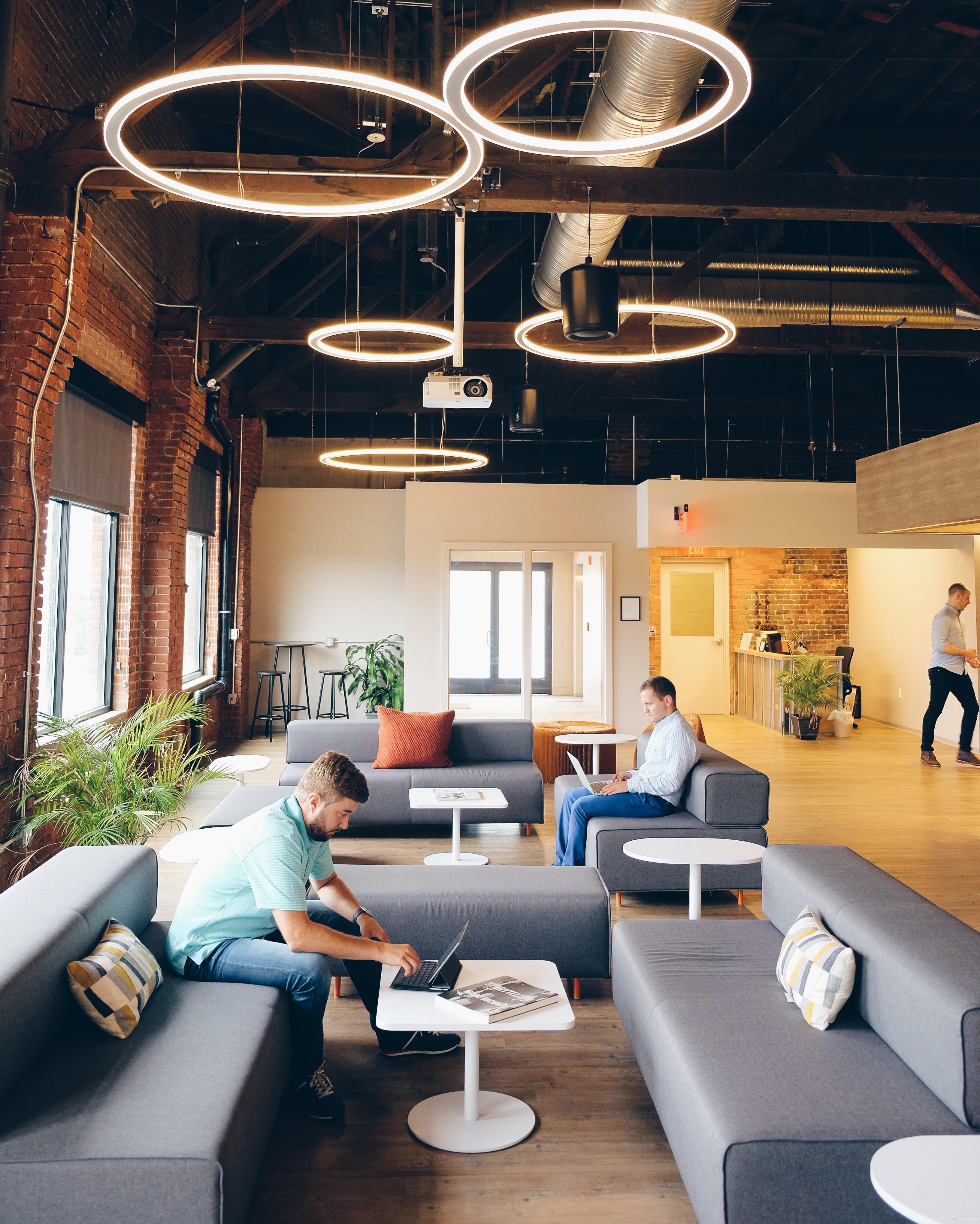
Let's speak hybrid!
RTO, WFA and the FoW - can you speak the lingo? Languages aren’t invented, they happen. Over the past two years we’ve seen the emergence of a new vernacular used to talk about the hybrid work phenomena, but what do these new terms mean?
The future of work has arrived. Here’s how to make it work for you.
If the future of the pandemic remains uncertain, the future of the workplace couldn’t be more clear. Or could it? Changes made by employers to cope with the impacts of COVID-19, like offering workers greater flexibility over where they work, are increasingly permanent, according to federal data.
Hybrid is here to stay. A recent report from the U.S. Bureau of Labor statistics finds that the popularity of remote work continues to rise throughout the U.S. economy. More than a third of companies surveyed had increased remote work options for some or all of their employees. Nearly two thirds of those businesses indicated they expected to make those changes permanent even after the pandemic had finally run its course.
Which brings us to the challenge of how to talk about our new workplace normal. Over the past two years we’ve seen the emergence of a new vernacular used to talk about the hybrid work phenomena. Words like digital nomad have made their debuts while existing terms like “on demand office” and “hub and spoke” have gained in reputation. It’s the argot of a new era and proficiency can only make it easier for business leaders to rethink their own workplace strategies, whether it’s facilitating greater workplace choice and mobility or rethinking the way real estate transactions happen.
Which brings us to the subject of this blog. At LiquidSpace, our mission is to help organizations large and small effectively manage their hybrid and distributed workplace strategies. Part of that is helping them be conversant in the language of our new workplace era. Not to worry! There are no verb charts, no grammatical contradictions. It’s a simple exercise in vocabulary building. And the vocabulary presented below is by no means exhaustive. The glossary of terms and phrases used to describe hybrid work is fluid, ever-expanding, much like hybrid work itself.
Our hope is that by bringing a handful of terms to your attention, we will make it easier for you to navigate the changing dynamic of this emerging workplace reality and put it to work for you.
WFH, we all know it and practically all of us have been doing it at some point in the last two years. Work from home is a workplace policy that refers to an employee working from their own residence, in PJs with an afternoon power nap if they wish to.
Hybrid work, also called Dynamic Work or Flex Work, recognizes that in today’s people-first, technology-driven world, workplace is infinite. Employees in a hybrid model work partly in the physical workplace, and partly remotely – at home or from another workplace. They’re anywhere. They’re everywhere. And that’s precisely the point.
FoW, meaning the Future of Work, refers to how work, workers and the workplace will evolve over the next ten years, as influenced by technological, epidemiological, social and generational changes, e.g. hybrid and remote working and smart buildings. It's something that many CEOs are currently spending a lot of time considering to make decisions that enable their organizations to thrive today while they prepare for the future.
Remote work frees employees from the conventional constraints of work. Think crippling commutes, think office monotony, and then think again. Work from home or anywhere other than the company office.
WFA stands for Work From Anywhere. That's it, absolutely anywhere. From the bathtub or the beach, this approach allows employees to execute their daily tasks in a flexible way and in an environment that works for them. This includes working from home, the HQ, a coworking space, coffee shop or an airport lounge; just wherever it works.
Telecommuting, also known as Teleworking is the ability for an employee to complete work from outside the traditional workplace by using telecommunications tools such as email, phone, chat and video apps.
Workcations are an evolution of ‘Bleisure’: travel that combines business trips with leisure trips. A growing travel trend, workcations are a mix of work and play, which have been made easier by remote working models - booking a mountain cabin for a week while working a full-time job remotely, for example.
Digital Transformation is the adoption of digital technology by a company. It’s a lot more than that, of course. It has fundamentally changed how businesses operate and has helped to catalyze the sea change that is the new era of hybrid work. With more organizations embracing remote work, digital technology has gone from a “nice to have” to “the only way work gets done.”
Digital Workplace, sometimes referred to as Virtual Workplaces, are work environments not confined to a single physical space. Digital workplaces deploy technology to facilitate productivity, collaboration and culture.
RTO stands for Return to the Office, and usually has a coordinated plan that comes with it. RTO proponents like Goldman Sachs' David Solomon and JP Morgan’s Jamie Dimon are famously old school. They insist the way we used to work is still workable. It works just fine, all evidence to the contrary. They are quickly finding themselves on the wrong side of workplace history.
Coworking space is any workplace environment – meeting space, virtual offices, even private offices – where workers can share space and work either independently or collaboratively.
Flex desk is a workstation typically comprised of a desk, chair and storage, which may be for private use or shared under a hot desk scheme.
Agile Working is an approach to completing tasks with maximum flexibility and minimum constraints by optimizing people, processes, and technology. It usually involves giving employees a great deal of autonomy to choose when and where they work.
Hot Desk is a workstation workers use only when/where they need it, the opposite of a dedicated desk.
Hotelling is similar to hot-desking but with greater levels of control and formal organization. Employees can pre-book and check in to a concierge to access a space, much like at an actual hotel.
Dedicated Offices consist of space that businesses rent long-term and where workers typically have designated areas, like a private desk, at which to perform their tasks. Dedicated offices may include a range of support services such as receptionist support, call answering, mail sorting and forwarding, and general day-to-day assistance.
On Demand Offices are workspaces that are available where and when you need them, but don't demand a permanent presence. They allow you to book a pay-as-you-go desk, meeting room or office instantly by the hour or day, with no membership required. They're ready to go when you are.
Third Place Venues offer a creative alternative to the home or office environment. Hotels, restaurants, and private clubs have tapped into new revenue streams by hosting remote working sessions. Bars, cafes, a leafy tree-lined squares – these are all examples of potential third space-venues.
Our Four-Way Fit (FWF) brings into sharp relief each of the four dimensions – People, Place, Price and Process – that comprise any effective hybrid work model, one that is capable of satisfying Future of Work needs that are beyond the ability of traditional workplace conventions to solve.
Digital Nomads are people who are location-independent and use technology to perform their jobs. They work remotely, telecommuting rather than being physically present at a company’s headquarters or office.
Hub and Spoke allows for a centralized hub for culture building and organizational alignment and a flexible network of smaller 'spoke' spaces for individual work and collaboration. It’s the best of both worlds, a core office that can play the role of a private HQ and a network of flexibility secondary spaces employees can use when they want to work remotely.
New dawn. New discourse. In times of change, people get creative with language. As coronavirus continues to reshape the way many people think about their relationship to work, it’s given rise to a new workplace language, one that reflects the shift away from office life as many of us have traditionally known it toward greater worker choice and workplaces that are more economic, more equitable and more conducive to work.
Join the conversation. Join the movement. The right side of history awaits you and your business.
For more advice on how to develop a hybrid workplace strategy that works for your business, contact us or visit LiquidSpace.com/Enterprise.
Ready to continue your journey?
There are two great ways to do it.
Ready to continue your journey?
There are two great ways to do it.






